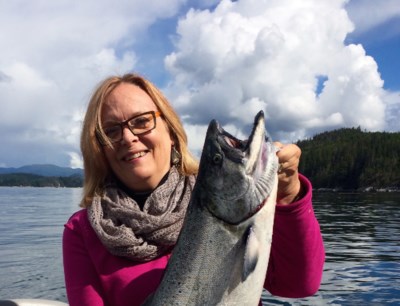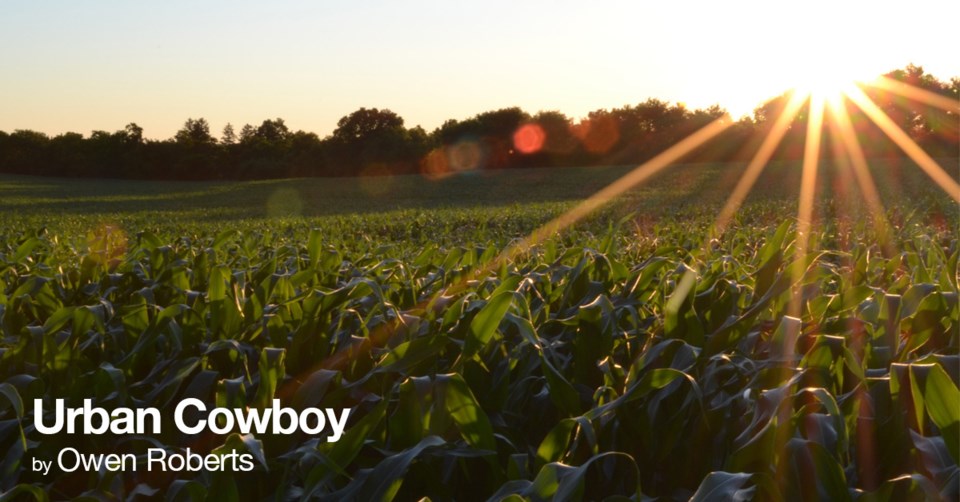This year’s Food Day Canada, coming up next Saturday, July 30, is destined to be one of the pithiest yet.
Pithy, because founder Anita Stewart of Elora, the University of Guelph’s food laureate, is gifting Canada with a must-read list of 149 ingredients – one for every year of Confederation – that are all-Canadian.
Can you name 149 food ingredients, period, let alone 149 that are all-Canadian? I’m pretty sure I couldn’t. Hers is a helpful and educational collection, a great way to bring to light the breadth of products and ingredients produced by this nation’s farmers and fishers.
And appropriate too that it be released as a Food Day Canada feature.
This initiative, which started back in 2003 when beef farmers were getting unfairly hammered by the BSE (mad cow) frenzy, involving a single cow in Alberta, is meant to bring to light the breadth and diversity of agriculture and food in our country.
Stewart founded it as Canada’s longest barbeque, a coast-to-coast celebration in connection with the August civic holiday. Along the way, it morphed into Food Day Canada, with the ever-present possibility and hope that Ottawa will breathe some life into the name of the August long weekend holiday, and actually call it Food Day. That would be a great declaration to make next year, as part of Canada’s 150th anniversary.
 Anita Stewart, the University of Guelph's food laureate, has come up with a must-read list of 149 all-Canadian ingredients. One of them is salmon. Photo supplied
Anita Stewart, the University of Guelph's food laureate, has come up with a must-read list of 149 all-Canadian ingredients. One of them is salmon. Photo suppliedStewart says that despite Canadians’ growing awareness of their food supply, the wolf is always at the door.
“With the globalized food system, and our dive to the bottom of retail pricing, our growers and processors have taken a beating,” she says. “But there are many success stories, too, and with Canadians beginning to realize that local and regional food is so very good for us on all levels, I believe there’s a huge opportunity for our ag community.”
She wants farmers to get involved in Food Day Canada. Farmers have a lot of credibility with the public. For this event, she says, they can get on Twitter, Facebook or Instagram and tag their photos with the hashtag #FoodDayCanada or #CanadaISfood.
“Then they can simply share the fruits of their labours . . . pictures of crops, herds, food on the table, friends eating Canadian ingredients,” she says.
Stewart also wants everyone to think about their definition of local. Does it align with the Canadian Food Inspection Agency’s definition, of 50 km. from home? How about the salmon she’s pictured here with? It likely swam much further than 50 km. to end up on Stewart’s hook. But where it was caught is considered its locality.
And it’s important to note that more than three-quarters of the salmon raised in BC fish farms is done in conjunctions with First Nations communities. That’s a great example of local food providing more than nutritional benefits.
Stewart also wants consumers to be aware of food labelling, a hot topic with many consumers. She notes that some products you’d naturally think are homegrown are actually imports – pickles, for example, most of which now come from India or the U.S. It’s not that they’re unsafe, but they sure aren’t local.
Same goes for Greek style yogurt. Much of it can’t qualify for “Product of Canada” labelling because it uses imported butter fat. Her solution? Find some that uses homegrown products, or name your own. And she provides a recipe, at this link.
Yet there are gems and eye-openers she uncovered in her research for what she calls her 149-ingredient “patriotic shopping list” – along with some obvious products we take for granted daily -- and lists them on the website.
For example, number one is tap water!
Others include milk, VQA wines, lentils, hemp hearts, quinoa, Mennonite-style cloth-wrapped, summer sausage, sablefish, Eagle brand milk, Ontario-grown peanuts, cider, dulse, and Primo ketchup.
I’ve watched Food Day Canada evolve and grow for the past 13 years, persistent and consistent in its message – that is, Canadian farmers need and serve our support. And on July 30, that’s what millions of us will give.
